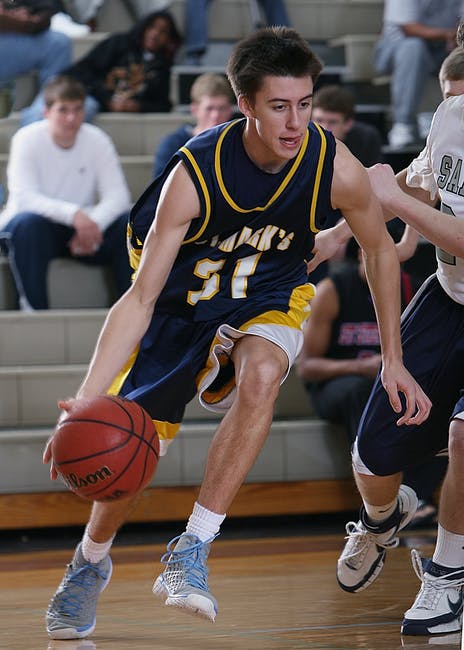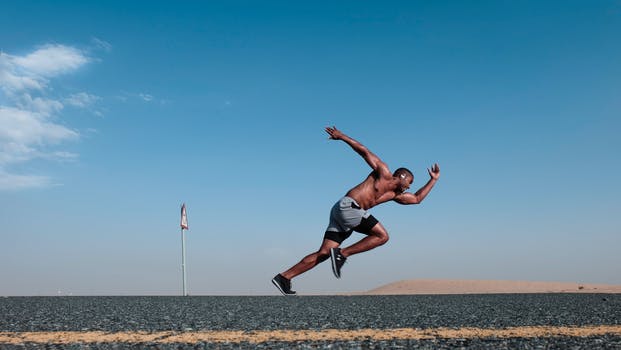In basketball, ideally a defensive series ends with either a turnover or a rebound. One way to accomplish that is to control the court around the basket all the way up to the free throw line. Doing this effectively prevents easy shots, prevents layups, can make the court smaller for the defense, and promotes turnovers.
This begins with extremely aggressive on-the-ball defense. When defending the ball handler, there’s a few things that we want to focus on:
- Stance: When defending the ball handler, the defender’s feet should be spread wider than their hips. His or her weight should be on the balls of their feet. Their hips should be pushed back, with their knees flexed so that their eyes are level with the ball handler’s chest. One hand should be up to deflect potential passes and interfere with the ball handler’s line of sight, the other hand should be low and should follow the movement of the ball while the ball handler dribbles.
- Positioning of the defender: The defender should be an arm’s length away from the ball handler, until the ball handler picks up the dribble. When this happens the defender should step forward and aggressively get in the ball handler’s personal space. The defender also needs to stay in between the ball and the basket to prevent easy baskets.
- Active hands: One hand is high and deflects/blocks line-of-sight, the other hand should follow the basketball as it is dribbled up and down. If this is done properly it is extremely nerve wracking to an offensive player.
- Communicate: If you are defending the ball handler, you need to communicate with the rest of your team. For example, if the dribble is picked up you should shout “Dead!” so that your team mates know that a shot or pass is going to be attempted. If the ball handler attempts a shot, you should shout “Shot!” so that your team mates are focused on the rebound.
Several things may result from aggressively defending the ball handler as described above. First, the ball handler may make a mistake and provide an opportunity for a turnover. Second, the ball handler may try to move away from the defender. This is what we want because it will push the ball handler back towards half court or to the corners. This makes them going out of bounds, or a half court violation, more likely which will result in a turnover. Third, other offensive players may cluster around the ball handler to help. Again, this is what we want as it makes the court smaller for our defense and with so many bodies getting in the way it is more likely that the offense will make a mistake a turn the ball over. Finally, the ball handler may be tempted into taking a bad shot, which could lead to a rebound.


